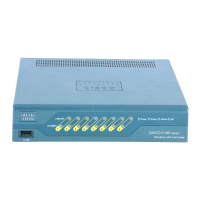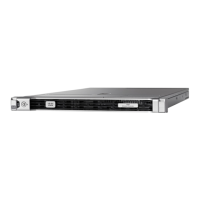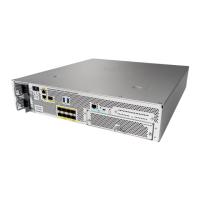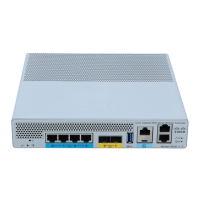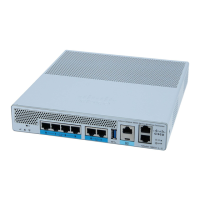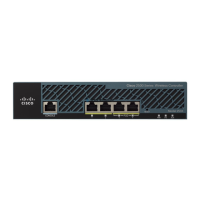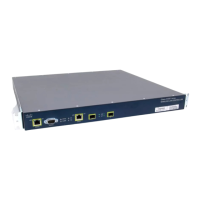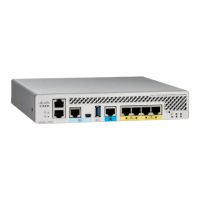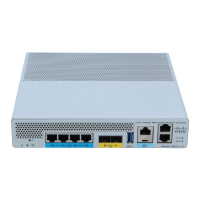6-37
Cisco Wireless LAN Controller Configuration Guide
OL-17037-01
Chapter 6 Configuring WLANsWireless Device Access
Configuring WLANs
Guidelines for Using IPv6 Bridging
Follow these guidelines when using IPv6 bridging:
• IPv6 bridging is supported only on the following controllers: 4400 series controllers, the Cisco
WiSM, and the Catalyst 3750G Integrated Wireless LAN Controller Switch.
• To enable IPv6 bridging, Layer 3 security must be set to None.
• Hybrid-REAP with central switching is supported for use with IPv6 bridging. Hybrid-REAP with
local switching is not supported.
• Auto-anchor mobility is not supported for use with IPv6 bridging.
• If symmetric mobility tunneling is enabled, all IPv4 traffic is bidirectionally tunneled to and from
the client, but the IPv6 client traffic is bridged locally.
• In controller software release 4.2 or later, you can enable IPv6 bridging and IPv4 web authentication
on the same WLAN, a combination that previously was not supported. The controller bridges IPv6
traffic from all clients on the WLAN while IPv4 traffic goes through the normal web authentication
process. The controller begins bridging IPv6 as soon as the client associates and even before web
authentication for IPv4 clients is complete. No other Layer 2 or Layer 3 security policy
configuration is supported on the WLAN when IPv6 bridging and web authentication are enabled.
Figure 6-15 illustrates how IPv6 bridging and IPv4 web authentication can be used on the same
WLAN.

